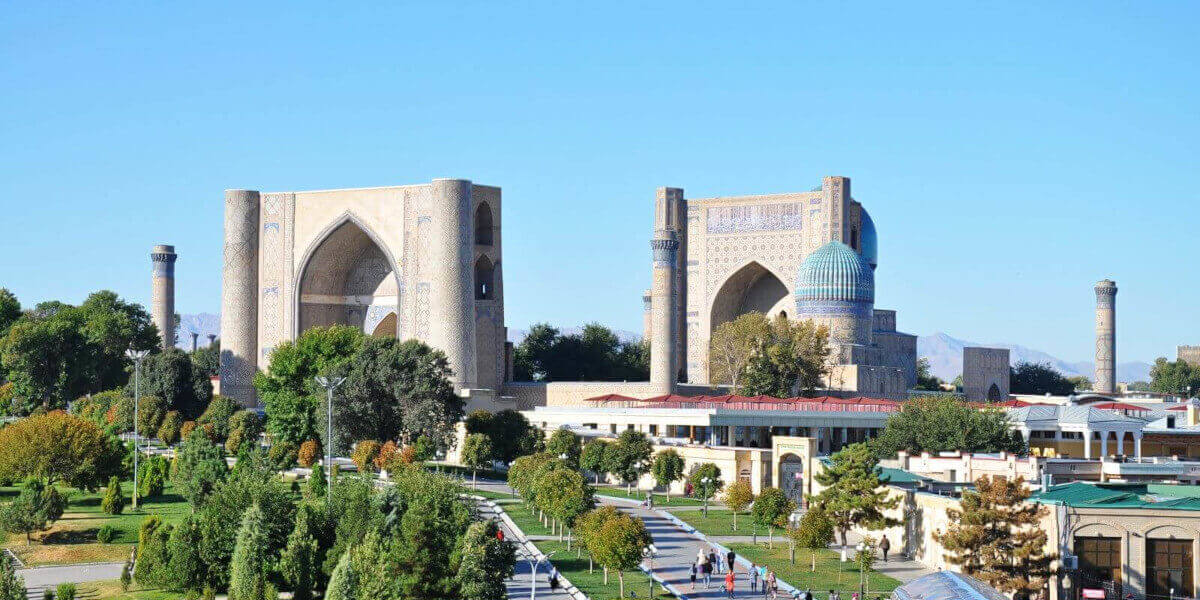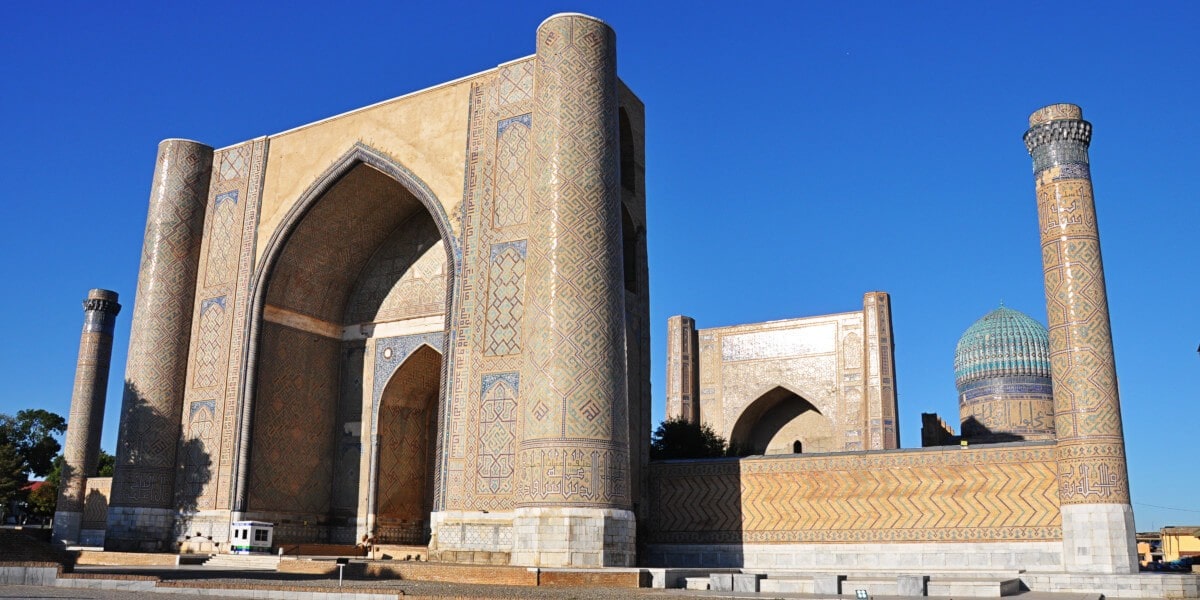Bibi-Khanum is the most significant historic mosque in Central Asia
Astrologers advised choosing the right place and time for construction, as it was the custom. Timur supervised the construction himself from time to time and sometimes expressed dissatisfaction; for example, the original portal was demolished on his order because it seemed too small concerning the central dome above the prayer hall.
Workers worked day and night, and in five years, the mosque was completed.
One of the characteristic features of this period was its enormous size and proportionality. This circumstance led to problems. The building started gradually collapsing. The reason was the massive size of the structure, which could not withstand the pressure. Reinforcement of the walls was useless as soon as the first bricks fell out of the walls. The seismic activity of Samarkand played its role too.

By the 17th century, the mosque had already been abandoned and was not functioning. In the 19th century, Bibi-Khanum Mosque looked more like ruins. The ruins were conservated only during Soviet times, and restoration works began later on. Restoration and conservation works have been carried out since the 1960s and up to now.
Description of the Bibi-Khanum mosque
Archaeologists and historians have contributed to the description of the original appearance of the mosque. The mosque had a courtyard with a dome-arched gallery, supported by about 400 pillars, along the courtyard’s perimeter. The building had three prayer rooms which can still be seen today. The building originally had four tall minarets and two small octagonal towers at each of its two portals, but they are only partially survived.
The legend of Bibi-Khanum Mosque construction
The mosque’s name means “holy Lady” and, according to legend, is associated with Tamerlane’s eldest wife, Sarai Mulk Khanum. She was Tamerlane’s confidante and even advised him on political matters. During Timur’s military campaigns, she was responsible for supervising the mosque’s construction. Timur’s wife was determined to complete it before her husband returned from another military campaign.

She rushed the construction, but the architect did not want to do so, as he adhered to the norms of architectural structure. Bibi-Khanum offered him whatever wealth he wished. However, the young architect was already in love with the queen and asked her for a kiss. Timur’s wife rejected his request and instead offered any lady from her entourage, explaining that women are all the same and if you take a basket of coloured eggs, they look different, but the filling is the same when you break them. The young architect’s answer was, “take two glasses, pour water in one and wine in the other; they look alike, but the taste is different”. It made it evident that he wanted the kiss of the queen. Being in the inevitable position, the queen agreed and allowed the architect to kiss her cheek. The kiss was so passionate that it left a mark on her cheek.
Back in Samarkand, Timur enjoyed the view of the finished mosque and noticed the stain on the face of his beloved wife. He ordered the execution of the architect, for which the architect was prepared. He created wings for himself, climbed up one of the mosque’s minarets, and soared off in the direction of Persia.